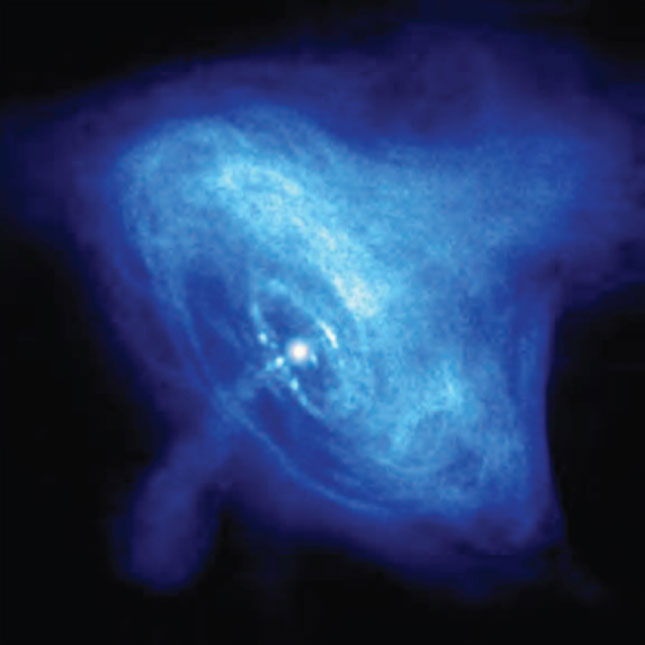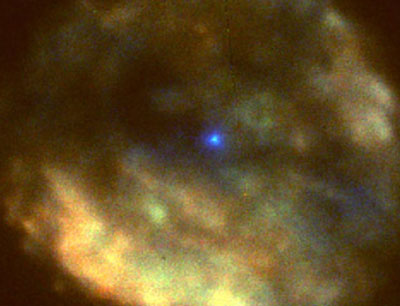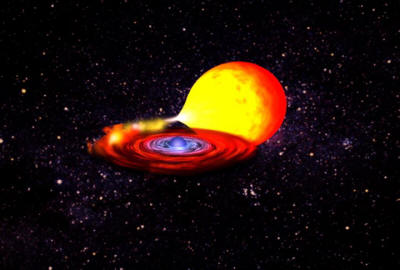|
by David Talbott and Wallace Thornhill Aug 31, 2007
from
Thuntherbolts Website
The Crab Nebula
pulsar, a theoretical neutron star.
A University of Michigan press release
announces "warped space-time" around a so-called "neutron star."
Could electricity provide a better explanation?
According to Sudip Bhattacharyya of NASA's Goddard Space Flight Center:
Part of what they are trying to
understand is the observation of spectral lines from "hot iron
atoms" that appear to be orbiting close in to the surface of the
neutron star. As interpreted by conventional theory, the spectra
indicate that some of the material is moving at over 40 percent
light-speed. Since iron atoms glow at certain optical frequencies
when heated to their incandescent state, there should be dark lines
within the specular distribution of the color bands. Called
Fraunhofer lines, they mark places within the spectrum of any
material where the emission energy is absorbed, leaving a dark line
within the band of color generated by a prism.
Using this system of "redshift" some
galaxies are measured to be moving away from Earth at an
unbelievable 90 percent of light-speed. The velocity assumption is
derived from a gravity-only version of the cosmos. A supermassive
object composed of tightly packed neutrons is the only mechanism
that could provide the gravitational strength needed for the iron
ions to achieve such fast orbits.
As we have previously written, a
foundational concept in nuclear physics is the "island of
stability." Using XMM-Newton, Bhattacharyya and his NASA Goddard colleague Tod Strohmayer observed a binary system known as Serpens X-1, which contains a neutron star and a stellar companion. They studied a spectral line from hot iron atoms that are whirling around in a disk just beyond the neutron starís surface at 40 percent the speed of light. . Many neutron stars are accompanied by a companion star, as portrayed in above illustration. The powerful gravity of the neutron star siphons off gas from the companion, which then settles into a slowly in-spiraling disk around the neutron star. Credit: NASA.
No "millions
of continuous H-bomb explosions" are taking place at the core and
the observational data leads to the conclusion that they are
actually giant balls of plasma. The information gleaned from
the Hinode spacecraft and other science experiments observing the sun
has confirmed that understanding.
|



